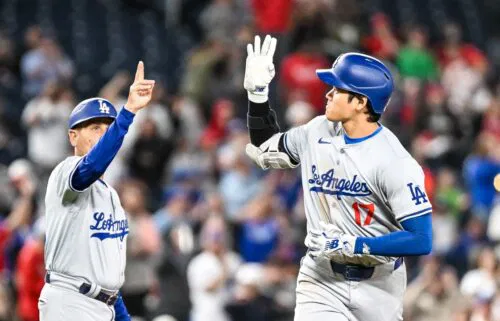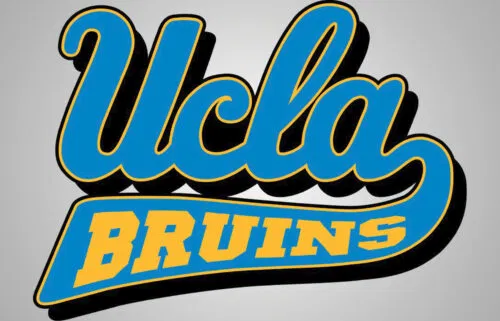Black club pro hopes to thrive, inspire at PGA Championship
By DOUG FERGUSON
AP Golf Writer
TULSA, Okla. (AP) — The numbers are not in his favor at Southern Hills, which is nothing Wyatt Worthington II hasn’t faced before.
Worthington, who spends his working hours giving lessons at The Golf Depot in central Ohio, is among the 20 club professionals who qualified for the PGA Championship. In five of the last 10 years, no club pro made it to the weekend. Go back to 1994 to find the last club pro to finish in the top 30.
And then there’s another set of odds.
Worthington is only the second Black club pro to play in PGA Championship.
When the 35-year-old Worthington first made it to the PGA Championship at Baltusrol in 2016, he was the first Black club pro to play the major in 25 years. Tom Woodard, now in the Colorado Golf Hall of Fame, was the only other, in 1991 at Crooked Stick.
“Did that surprise me? Let me give you a double-sided answer,” Worthington said. “Yes, it did surprise me. But the more information I had, it didn’t.”
The PGA of America counts 28,343 professionals, of whom 194 identify as African-American. From a field of 312 players in the PGA Professional Championship, Worthington was one of three Black club pros, “the most I’ve ever seen.” He tied for fourth to qualify for the PGA.
“For me to even be at the club pro championship, I’m not supposed to be there from a statistical standpoint,” he said.
And now he’s playing against the strongest field of the four majors, which includes Tiger Woods, the player responsible for him falling in love with golf.
Southern Hills is a course Worthington only would have dreamed of playing when he was hitting golf balls in baseball outfields in Ohio as a teenager, simulating bunkers by scraping up the infield dirt and honing his game on ranges and public courses on the east side of Columbus.
Now it’s a chance to show he can play, and hopefully to inspire.
“I’m looking forward to playing really good golf, being in the environment, making change and touching spectators,” Worthington said. “It’s having the impact on people.”
The PGA of America didn’t even allow Black professionals until 1961 when its Caucasian-only clause finally was rescinded. It has doubled down efforts to change the look of golf, not just at the elite level but in pro shops and other industries the game touches.
Seth Waugh, the association’s CEO, said golf is an $85 billion industry with 2 million jobs. The mission is to attract people of all backgrounds and to show there’s room in the industry inside and outside the ropes. And it’s a long road ahead.
“We had Caucasians only until 1961, and that’s unimaginable,” Waugh said. “But on the other hand, it’s been 60 years and we haven’t moved the needle enough. This is a very long journey and we’re very serious about it. We’re not trying to check a box. We’re all in.”
The association is coming off the 36th edition of the PGA Works Collegiate Championship — formerly the National Minority College Championship — along with spinoff programs aligned with historically black colleges or universities and designed to provide pathways to careers in golf.
The PGA Tour has invested $100 million toward racial equity and inclusion, including $10,000 grants to each of the 50-plus HBCU’s men’s and women’s golf programs for travel and recruiting. The tour and PGA of America are making available top golf courses for the Advocates Professional Golf Association tour, which this year had the final round of a 36-hole event at Torrey Pines televised on Golf Channel.
Worthington tied for fourth in the Billy Horschel APGA Tour Invitational at TPC Sawgrass two weeks ago. Horschel was so inspired by the APGA that he created the largest purse ($125,000) on the schedule.
And on Monday, he was practicing on the front nine with Worthington ahead of a major championship.
“I think he has a good chance of playing well. He’s an impressive kid, an impressive story,” Horschel said. “He just needs a break or two with financial support. Corporate sponsors should be looking for people like that.”
Worthington still recalls his biggest moment in golf, almost down to the minute. It was July 29, 2001, during a clinic in Columbus hosted by The First Tee and the Tiger Woods Foundation. Woods gave individual instruction to each kid.
“We all had blue hats, a white shirt, black shorts,” Worthington said. “When Tiger was coming around, he had that aura. Everyone got silent. You just felt his presence and energy. He spent probably 10 to 20 minutes with me and it felt like over an hour.”
Worthington went home that day and told his father he wanted to play on the PGA Tour.
“I said, ‘What’s your backup plan?’” his father recalled as he stood outside the Southern Hills clubhouse. “He just wanted to be in golf.”
Worthington went to Methodist University in North Carolina for the Professional Golf Management program. He has worked at Muirfield Village as an assistant pro and now teaches at The Golf Depot, which has a range, an academy and a Par 3 course.
His hope is for kids to love golf as much as he does. His passion remains rooted in playing. What he lacks his funding, and Worthington feels this is the biggest obstacle in getting more diversity in golf.
“It’s moving in the right direction,” he said. “Do we have a long way to go? Of course. And Seth has done an outstanding job. But there’s an issue. To have exposure at a young age? Most checked that box through Tiger, so that’s not it. We need access, we need opportunity and we need funding.”
Golf is expensive at its core with equipment. Throw in the travel and fees, and it adds up.
“I’m a First Tee kid from Columbus who went to a PGM program. I’m checking off a lot of boxes. I’ve played by rules and done everything in my power, and I’m struggling,” Worthington said. “This is not about, ‘What more do I have to do?’ It’s just to show how hard it is.”
Woods doesn’t recall the lessons he gave Worthington two decades ago. He has touched a lot of lives in golf. They remember. But he can appreciate the plight. When he was inducted into the World Golf Hall of Fame, Woods told of his parents taking out a second mortgage for him to compete in junior golf tournaments.
Yes, access is improved and golf organizations are doing their part.
“But how do you sustain that?” Woods said. “That’s the hard part. How do you keep them in there for years at a time? And then you look at the pyramid effect. The more you go up, the harder the competition and the more kids are going to be dropped.”
Worthington keeps plugging along. He’s teaching. He caddies on the side. Whatever money he can save goes to tournaments and travel. It led him to another chance in the PGA Championship, which he sees as an opportunity and a platform — for him and the PGA.
“To have Wyatt here and let kids see somebody who looks like them and have an opportunity to do what he’s doing, for him it’s huge,” Waugh said. “For us, it’s massive.”
___
More AP golf: https://apnews.com/hub/golf and https://twitter.com/AP_Sports



